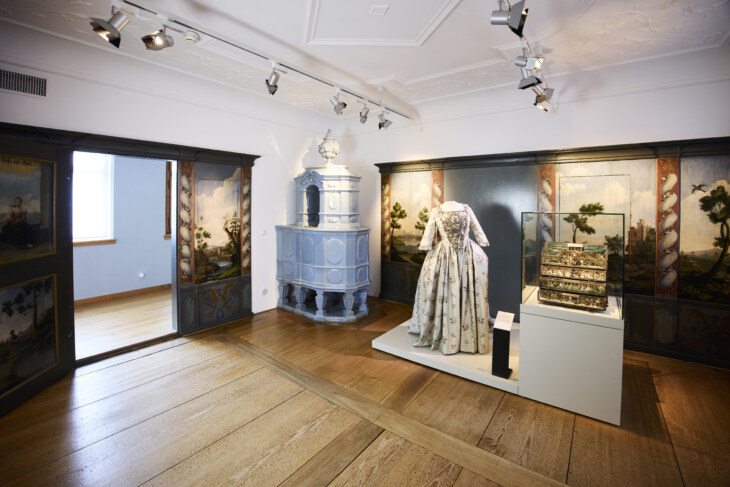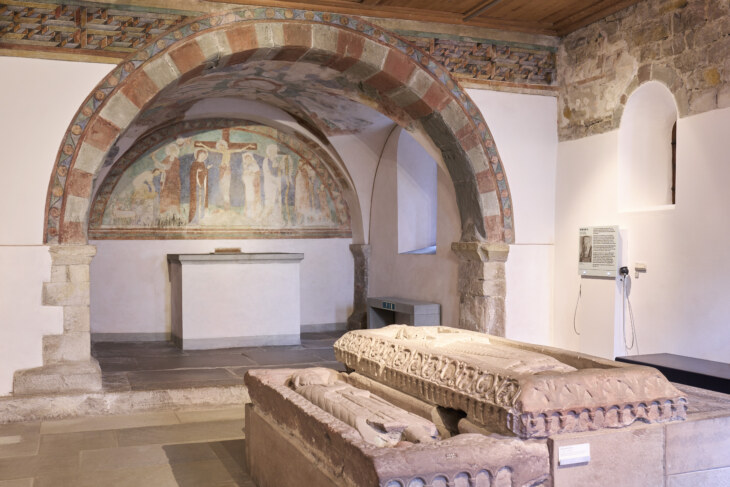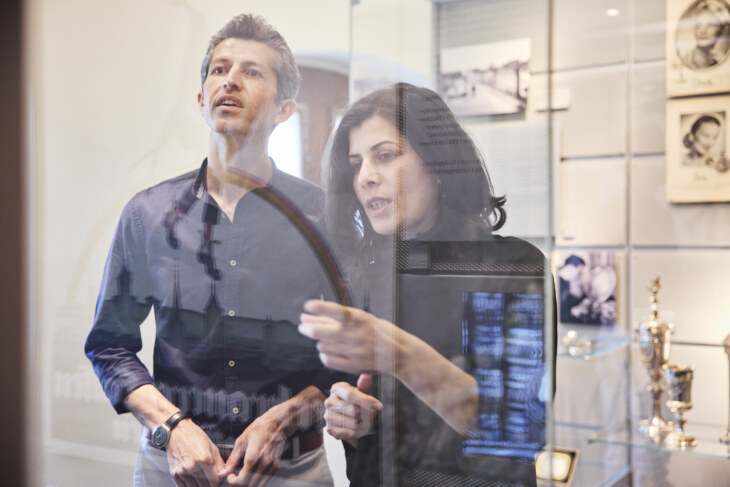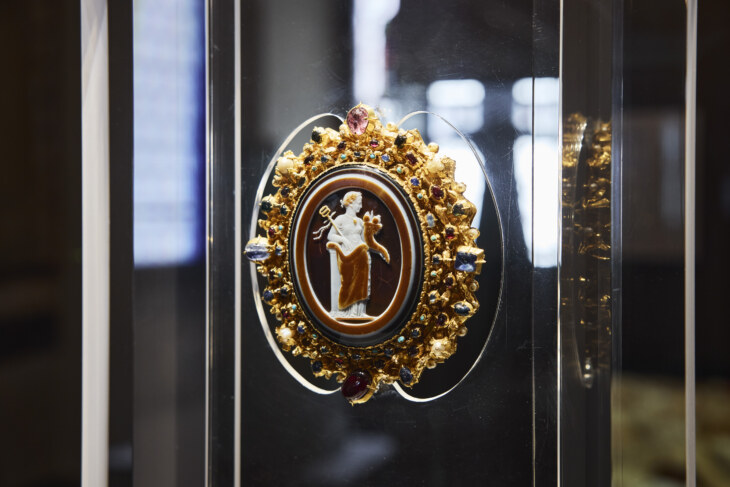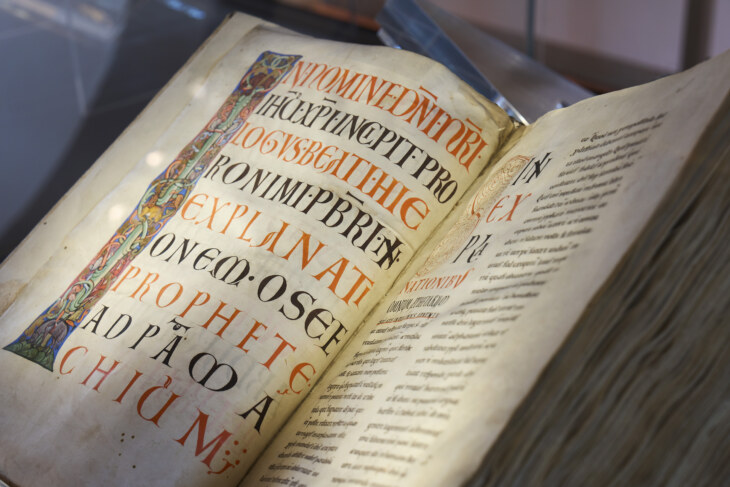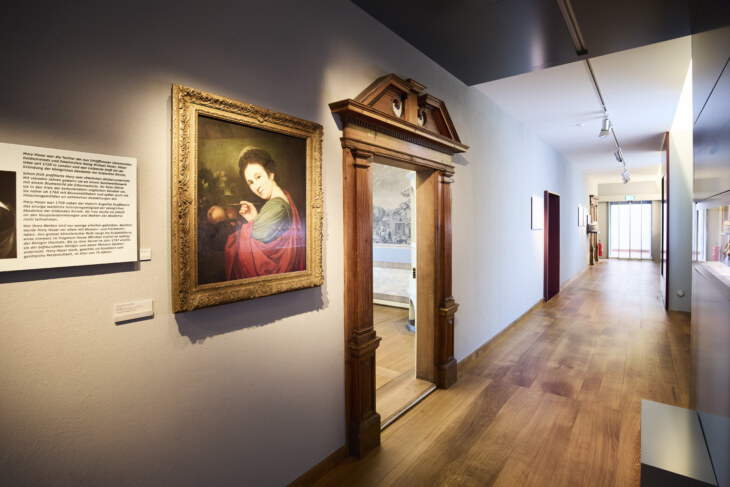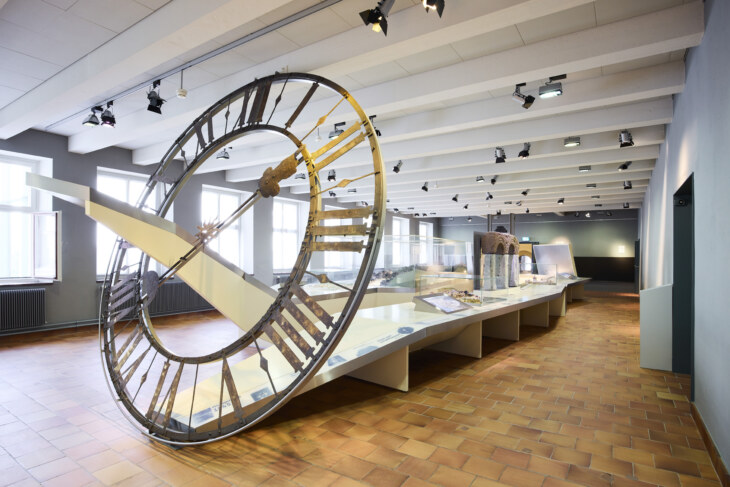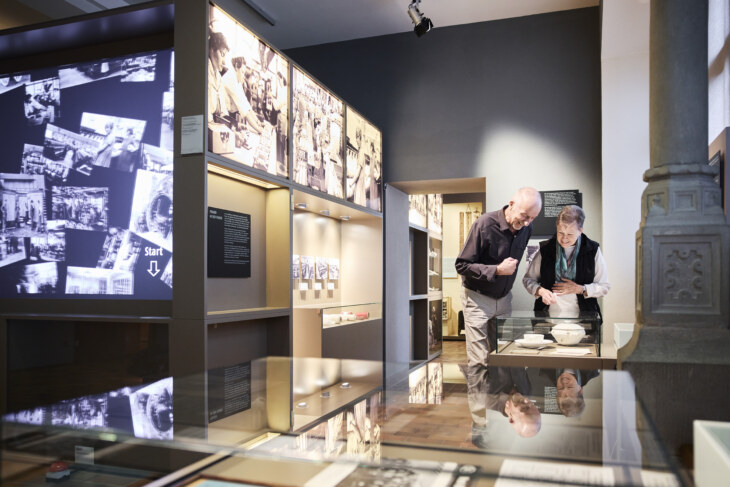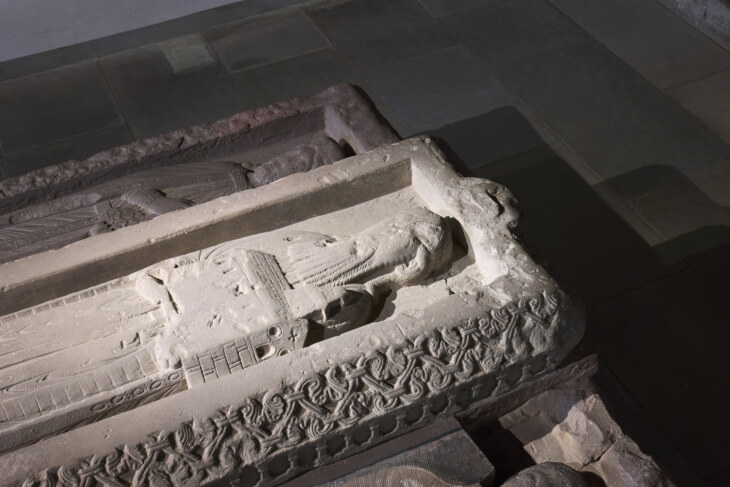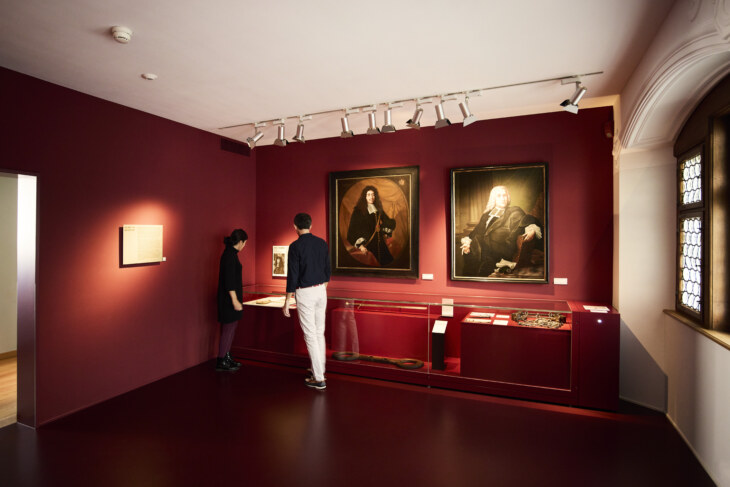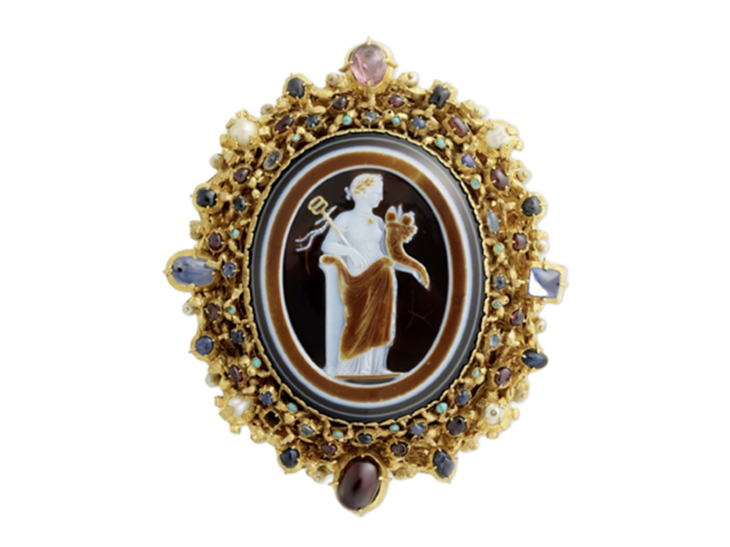Cultural History
The exhibition begins in a central introductory room. An impressive timeline visualizes the most important stages in the developmental history of the city of Schaffhausen. From here, three independent tours lead through the exhibition across several floors. We pass through the rooms of the former Benedictine monastery, from the Romanesque chapels to the late Gothic refectory and the impressive cross-shaped hall, as well as the once-celebrated modern museum wing from the 1930s.
The exhibits range from the Alemannic conquest in the 5th century to the founding of the city of Schaffhausen, the guild regime, the Helvetic Revolution, industrialization, World War II, and the recent past. Fascinating exhibits and historical furnishings, interactive computer and listening stations, film footage, and attractive city models offer diverse insights into the past.
On the tour of the Middle Ages, we encounter world-famous exhibits such as the tombstones of the Nellenburg city founders, the Romanesque sculptures and manuscripts of the monastic period, and the Onyx of Schaffhausen. The early modern period takes us into the splendid era of the guild regime, including impressive period rooms, and presents exquisite works by renowned Schaffhausen craftsmen of the 18th century. The tour of the recent past focuses on Schaffhausen’s important industrial history and, unique in Switzerland, the time of World War II and the consequential mistaken bombing of Schaffhausen on 1 April 1944.
Spectacular New Acquisition
Thanks to financial support from the Sturzenegger Foundation and the tireless efforts of the former president Hans Konrad Peyer (even after his resignation from the foundation board), a significant example of European goldsmithing art has returned to Switzerland. This skillfully crafted double goblet is an extremely rare testament to the medieval culture of Schaffhausen and Switzerland. We are very fortunate to be able to bring this piece from around the year 1500 back to Switzerland. The double goblet is now on display in the permanent exhibition on cultural history entitled Schaffhausen im Fluss. More information about the goblet is available on the Sturzenegger Foundation website.

